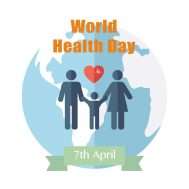Joan Kaunhe [not her actual name] was diagnosed with tuberculosis (TB) during her first pregnancy, which resulted in a miscarriage, two years ago. She got unhappy as a result of the TB drugs’ negative effects, and she had difficulties eating. She and her husband were diagnosed with HIV a year later, during her second pregnancy. He passed away early this year, not long after his wife was diagnosed with tuberculosis for the second time. Despite the fact that she has completed her second round of therapy, her condition has caused her to abandon her employment. She and her children are supported by her mother-in-pension. law’s She does not inform anybody in her family or community about her HIV and tuberculosis because she is scared her mother-in-law would reject her and her children discriminately.
Patients like Joan are seen every day by those of us at Reproductive Health Uganda (RHU) who practice infectious disease treatment while providing integrated sexual reproductive health and rights services in TB-endemic countries like Uganda. Her narrative is, indeed, the story of tuberculosis among vulnerable women of reproductive age. Pregnant women are more vulnerable to tuberculosis, but we don’t know the best approaches to prevent or manage the disease in these women. Even the most fundamental facts that we have able to establish are unknown to a huge majority of health care practitioners in TB-endemic nations’ rural and disadvantaged urban settings. For example,
As we commemorate International Tuberculosis Day on March 24, 2022, under the theme “The Clock is Ticking”, it conveys the sense that Uganda is running out of time to act on the commitments to end TB made by global leaders. In women, TB is most common during the reproductive years.
Uganda is one of the 30 World Health Organization (WHO) designated countries with a high burden of TB and HIV. In 2019, the estimated incidence rate for TB was 200 per 100,000 people and the mortality rate was 35 per 100,000 people.
According to the Ministry of Health in Uganda, the TB disease burden stands at 3.5 infected persons per 100,000, of which two of these are women between 15 and 49 years of age.
Anicia Filda, Reproductive Health Uganda (RHU) Gulu branch in charge, says that women are twice as likely to develop TB around the time of pregnancy than at any other time in their lives.
“If a woman develops TB when she is pregnant, she has a 20% risk of death,” Filda said.
TB is a major cause of maternal mortality, especially among HIV-infected women. Pregnant women with TB also have a higher risk of pregnancy complications, such as miscarriage, hemorrhage, and infection.
If a woman develops TB when she is pregnant, her infant has a 38% risk of death.
Infants born to TB-infected mothers are at a higher risk of preterm delivery and poor birth weight. HIV-positive moms who have tuberculosis are twice as likely as those who do not have tuberculosis to transfer HIV to their child during pregnancy. In neonates, tuberculosis infections develop faster than in adults. Even children under the age of five are eight times more likely to die if they live in the same house as a mother with tuberculosis.
Aldon Walukamba G, the author, is the RHU Media Advocacy and Documentation Coordinator.


